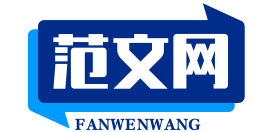1. Exploring the Intersection of Technology and Education: The Future of Learning in the Digital Age
2、Sustainable Development Goals and Climate Change: A Global Call for Action

文章一:Exploring the Intersection of Technology and Education: The Future of Learning in the Digital Age
In the dawn of the digital age, where technology is reshaping every aspect of our lives, the realm of education is not immune to this transformation. The intersection of technology and education has not only amplified the potential for learning but also redefines the boundaries of what is possible in the classroom. This essay delves into how technology is transforming education, the challenges it presents, and the future of learning in a digital world.
The Rise of Online Learning Platforms
The advent of the internet and subsequent development of online learning platforms have democratized access to education. Platforms like Coursera, edX, and Udemy offer a wide array of courses from top universities, making higher education accessible to students across the globe. This not only expands educational opportunities but also fosters a sense of global connectivity and collaboration among learners.
Personalized Learning and Adaptive Technologies
One of the most significant impacts of technology on education is the ability to provide personalized learning experiences. Adaptive learning software, such as Knewton and Smart Sparrow, tailors content based on an individual's strengths, weaknesses, and learning pace. This personalized approach not only enhances engagement but also leads to better retention and comprehension.
The Role of Artificial Intelligence in Education
Artificial intelligence (AI) is transforming education by enabling automated grading, personalized feedback, and predictive analytics. AI-powered systems can analyze vast amounts of data to identify patterns and trends, providing insights into student performance and areas for improvement. For instance, AI-driven tutoring systems like Knewton Tutor can provide individualized support to students, enhancing their learning experience.
The Challenges and Ethical Considerations
While the integration of technology in education holds immense promise, it also presents challenges. Privacy concerns, digital divides, and the potential for algorithmic bias are some of the ethical issues that need to be addressed. Ensuring equitable access to technology and protecting student data are crucial for maintaining trust in digital learning platforms.
The Future of Learning
As we move further into the digital age, the future of learning is likely to be more immersive, interactive, and personalized. Virtual reality (VR) and augmented reality (AR) technologies are already being explored for educational purposes, offering students the chance to experience historical events or conduct scientific experiments in a simulated environment. Additionally, advancements in artificial intelligence will continue to refine personalized learning experiences, making education more efficient and effective.
In conclusion, the intersection of technology and education is reshaping the future of learning. While challenges remain, the potential for positive transformation is immense. As educators and policymakers embrace these changes, we can create a more inclusive, efficient, and engaging educational landscape for all.
文章二:Sustainable Development Goals and Climate Change: A Global Call for Action
Climate change, one of the most pressing global challenges of our time, intersects with the United Nations' Sustainable Development Goals (SDGs), aiming to create a more sustainable and equitable world by 2030. This essay explores the links between climate change and the SDGs, highlighting the urgent need for collective action and the role each individual can play in mitigating its impacts.
The Interlinked Nature of Climate Change and SDGs
Climate change affects nearly all aspects of human life, from food security to health to economic stability. It directly impacts SDG 13, which focuses on climate action, but its ripple effects touch upon several other goals, such as SDG 2 (zero hunger), SDG 3 (good health and well-being), and SDG 15 (life on land). Addressing climate change is thus crucial for achieving the broader objectives outlined in the SDGs.
The Need for Adaptation and Mitigation
Mitigation refers to reducing greenhouse gas emissions to prevent further warming, while adaptation involves preparing for and managing the impacts of climate change that are already unavoidable. Both are essential for achieving climate resilience and sustainable development. For instance, SDG 7 (affordable and clean energy) promotes the use of renewable resources, reducing carbon emissions while also addressing energy poverty.
The Role of Governments and International Cooperation
Governments have a pivotal role in leading climate action through policy formulation, investment in green technologies, and supporting vulnerable communities. The Paris Agreement, a landmark international treaty on climate change, underscores the need for collective efforts to limit global temperature rise. However, achieving these goals requires significant financial resources and technological transfers, highlighting the importance of international cooperation and financial mechanisms like the Green Climate Fund.
Individual Contributions to Mitigating Climate Change
While governments hold primary responsibility for climate action, individuals can also make a difference by adopting sustainable lifestyles. This includes reducing carbon footprints through practices such as using public transport, conserving energy at home, reducing waste, and supporting local food production (SDG 12). Additionally, raising awareness and advocating for climate-friendly policies are crucial steps towards collective action.
Innovation and Technology in Climate Solutions
Innovation in clean technologies holds immense potential for mitigating climate change. From electric vehicles to carbon capture and storage solutions, technological advancements are crucial for achieving climate resilience. Furthermore, digital solutions like smart grids and precision agriculture can enhance efficiency and reduce environmental impacts.
In conclusion, climate change is a complex global challenge that requires urgent and concerted efforts from all stakeholders. By aligning climate action with the SDGs, we can foster a more sustainable future that addresses both immediate needs and long-term resilience. As individuals, governments, businesses, and international organizations work together towards this shared goal, we can mitigate the impacts of climate change and build a more resilient world for generations to come.







